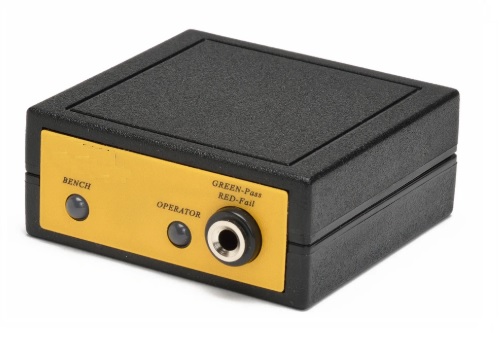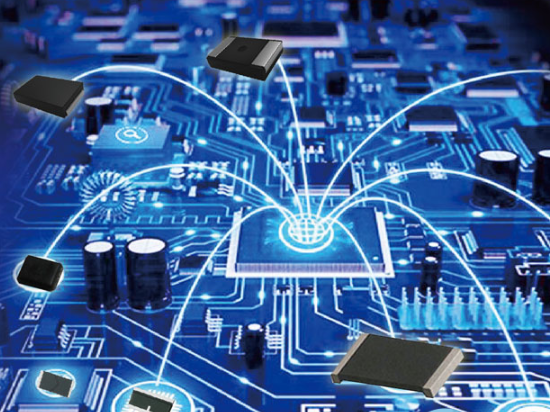Position:Home » Technical Articles
Wave Distortion Technology Ensure the Sensitivity of ESD Sensitivity
Writer:Microhm Page View:Date:2019-12-23
We talked in the past about the benefits of continuous monitors and also introduced the different types (single-wire vs. dual-wire) to you. The focus of today’s post is the technology behind continuous monitors – how they work, how they compare to each other and what role does the resistor play? So, let’s jump right in.
Introduction to Continuous Monitors
While wrist straps are the first and best line of defence against ElectroStatic Discharge (ESD), they must be tested to ensure that they are installed and working properly. On-demand or "touch" testers have become the most common testing method; they complete a circuit when the wrist strap wearer touches a contact plate, tight size surface mount resistors are ultilized in the product.

One drawback with on-demand type testers is that they require a dedicated action by the wearer of the wrist strap to make the test. Also, knowing that the wrist strap has failed after the fact may possibly have exposed a highly sensitive or valuable assembly to risk. Continuous monitors eliminate the possibility of a component being exposed to ESD during the time that the wrist strap was not working properly.
If your company manufactures products containing ESD sensitive items, you need to ask yourself “how important is the reliability of our products”? Sooner or later a wrist strap is going to fail. If your products are of such high value that you need to be 100% sure your operators are grounded at all times, then you should consider a continuous monitoring system.
Technologies used for Continuous Monitors
There are three types of wrist strap monitoring on the market today:
Basic Capacitance / Impedance Monitoring
Resistance Monitoring
Wave Distortion Capacitance / Impedance Monitoring

Let’s look at the resistance monitoring in a bit more detail:
Dual-wire resistance monitors were developed to overcome some of the problems with the AC capacitance types. Here again, the concept is simple. By providing a second path to ground (without relying on the capacitor above) we can apply a tiny DC current. It is then simple to measure the DC resistance of the circuit and alarm if that resistance goes too high (open circuit) or too low (the safety resistor is shorted). Chip resistors is used to sense the current here. Thus, a two-wire monitor provides the same reliability as a touch tester and a simple, easy to understand measurement. The shortcomings with the AC capacitance monitor are eliminated.
Two-wire monitors require two wires to work. This means that the wearer must wear a dual wire two-conductor wrist strap/coil cord which are more expensive than standard single wire wrist straps. There have been some reports that a constant DC voltage applied to the wristband causes skin irritations.
As you can see, the latest Wave Distortion Technology provides the most reliable and stable confirmation of an operator’s continuous path-to-ground to ensure ESD sensitive product is protected at all times. Many passive components, like resistors, also play a important role in the performance of wrist straps.
Introduction to Continuous Monitors
While wrist straps are the first and best line of defence against ElectroStatic Discharge (ESD), they must be tested to ensure that they are installed and working properly. On-demand or "touch" testers have become the most common testing method; they complete a circuit when the wrist strap wearer touches a contact plate, tight size surface mount resistors are ultilized in the product.

One drawback with on-demand type testers is that they require a dedicated action by the wearer of the wrist strap to make the test. Also, knowing that the wrist strap has failed after the fact may possibly have exposed a highly sensitive or valuable assembly to risk. Continuous monitors eliminate the possibility of a component being exposed to ESD during the time that the wrist strap was not working properly.
If your company manufactures products containing ESD sensitive items, you need to ask yourself “how important is the reliability of our products”? Sooner or later a wrist strap is going to fail. If your products are of such high value that you need to be 100% sure your operators are grounded at all times, then you should consider a continuous monitoring system.
Technologies used for Continuous Monitors
There are three types of wrist strap monitoring on the market today:
Basic Capacitance / Impedance Monitoring
Resistance Monitoring
Wave Distortion Capacitance / Impedance Monitoring

Let’s look at the resistance monitoring in a bit more detail:
Dual-wire resistance monitors were developed to overcome some of the problems with the AC capacitance types. Here again, the concept is simple. By providing a second path to ground (without relying on the capacitor above) we can apply a tiny DC current. It is then simple to measure the DC resistance of the circuit and alarm if that resistance goes too high (open circuit) or too low (the safety resistor is shorted). Chip resistors is used to sense the current here. Thus, a two-wire monitor provides the same reliability as a touch tester and a simple, easy to understand measurement. The shortcomings with the AC capacitance monitor are eliminated.
Two-wire monitors require two wires to work. This means that the wearer must wear a dual wire two-conductor wrist strap/coil cord which are more expensive than standard single wire wrist straps. There have been some reports that a constant DC voltage applied to the wristband causes skin irritations.
As you can see, the latest Wave Distortion Technology provides the most reliable and stable confirmation of an operator’s continuous path-to-ground to ensure ESD sensitive product is protected at all times. Many passive components, like resistors, also play a important role in the performance of wrist straps.
Keywords:chip resisto
Latest News
- Resistor's role in measuring and correcting LED,,,
- Single through-hole resistors' characteristics ,,,
- Why shunt resistors for current sense applicati,,,
- Metal-film resistors with small size, high resi,,,
- 36W High-Current Shunt Resistors MMS8420,,,
- 1W Surface Mount Resistor MPR1206,,,
- An Overview of Microhm Electronics' Resistor Pr,,,
- More anti-sulfur resistors used in harsh envir,,,
- Resistance changes with temperature,,,
- 140W TO247 High Power Heatsinkable Resistor,,,
- MMS5930 is ideal for current sensing in industr,,,
- Shunt resistors selection for engineers' design,,,
- Considerations for choosing precision resistors,,,
- Ceramic Encased Cement Resistors NWH Series for,,,
- Resistors for Passive Balancing in Battery-Pow,,,
Hot Articles
- Microhm will take part in 10th Automotive World,,,
- Thanks for Visiting Microhm's Booth E5-5706 in ,,,
- Resistors in Short Supply: Blame Cars,,,
- New lunch: High Power Precision Shunt Resistor,,,,
- How to Test a Resistor,,,
- Innovative Technology, Future Electric: Electri,,,
- What is Precision Resistors?,,,
- SMD Resistors Sizes and Packages,,,
- The Construction and Features of Metal Film Res,,,
- What is a TO-220 Resisor?,,,
- Hot Selling Products: Precision Shunt Resistors,,,
- How to Calculate the Equivalent Resistance Valu,,,
- What is a Fixed Resistor?,,,
- Resistors in LED Circuits,,,
- Resistors Types and Materials Overview,,,
Resistance applications
- Carbon Film Resistors' Features and Application,,,
- The Four Important Functions of Alloy Resistors,,,
- Urbanization Development Bringing the Transform,,,
- Miniature future for passive electronic compone,,,
- The Measurement Accuracy of Automotive Shunt is,,,
- Surface Mount Resistor's Size and Package ,,,
- Heater Blower Motor Resistor in Air Conditioner,,,
- Industrial Roberts Applied to Solar Photovoltai,,,
- Precision Resistors' Construction and TCR,,,
- Select the Right Resistor for Harmonic Filterin,,,
- BMS for New Energy Vehicle,,,
- Difference Between High Precision Resistors and,,,
- The Main Application for High Precision and Low,,,
- Shunt Resistor MMS8420 for High Current Stable ,,,
- Why Zero-Ohm Resistors?,,,
